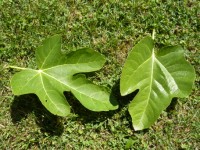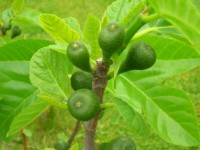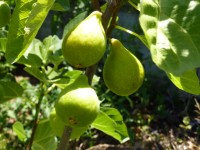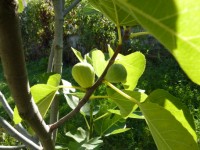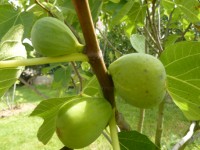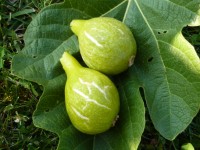
The exact origin and identity of this tree is not known in the ancient world. Desert King comes from a fig tree found in 1930, near Madera, California.
This is a fast growing tree with long and erected branches that the foliage is unable to completely cover, giving the tree a little “bare” appearance. In Spring, to force the tree to produce new ramifications and to prevent it from rising up too rapidly, the terminal buds of few ramified, but strong, branches must be pinched. The result of this pinching is that two or three new lateral branches will appear and will probably already bear new fruits the following year.
The resistance to cold is quite strong. No cold damages were ever observed, even in 2013, after two weeks of -15° at night and -10° at day. The fruit buds resist to Winter frost, and to sudden temperatures changes in Spring. Desert King has some resistance against the wind and in very cold, rainy and windy Springs, its brebas usually resist while other fig cultivars drop most of their fruits.
This fig tree produces brebas with excellent organoleptic qualities, of large size, melting in the mouth and very sugared. At complete maturity, the skin color changes from light green to pale yellow.
The fruit resists quite well to rain showers, but can split in case of long rain periods. It is earlier than most breba varieties by about two weeks, with a fruiting duration that lasts two to three weeks and usually starts in the middle of summer.
It is important to highlight that Desert King is one of the most productive, if not the most productive, fig tree for brebas, each branch can bear up to 6-8 fruits.
This fig tree also produces a main crop, pyriform and flattened with a dark strawberry pulp. The organoleptic quality of the fruit is exceptional; melting texture, taste reminding of mulberry and strawberry, higher sugar content than the breba fruit with seeds that are felt in the mouth but remaining very pleasant. Finally the fruit possesses a medium skin size and weighs about 47 gr.
If the tree becomes too tall and large, and that trimming is envisaged in Spring, do not trim back all terminal branches because it would mean annihilating the entire breba crop; ideally trim one branch out of two or out of three.
To conclude, this fig tree is highly recommendable for its exceptionnal early crop with numerous brebas fruits, excellent main cromp and incredible cold resistance.
|

